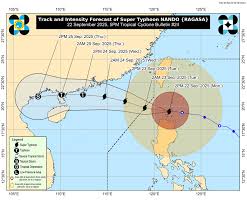Super Typhoon Nando: A Devastating Force in the Philippines

Introduction
Super Typhoon Nando, a powerful storm, has recently struck the Philippines, raising concerns about the catastrophic effects of climate change on extreme weather patterns. This natural disaster has left countless individuals in peril, highlighting the urgent need for effective disaster preparedness and climate action.
Impact of Super Typhoon Nando
Nando made landfall on October 12, 2023, with wind speeds reaching up to 240 km/h, causing widespread destruction across several provinces. Areas such as Leyte, Samar, and Cebu were particularly hard-hit, with thousands of homes damaged or destroyed. The Philippine Atmospheric, Geophysical and Astronomical Services Administration (PAGASA) reported substantial rainfall leading to severe flooding and landslides, displacing over 50,000 residents.
The government has deployed emergency services to aid in rescue operations, but the sheer scale of the devastation has overwhelmed local resources. Hospitals are struggling to accommodate the influx of injured residents, and basic necessities such as food and clean water have become scarce, raising alarming health concerns among communities.
Current Response and Recovery Efforts
As of now, the Philippine government, in collaboration with international relief organisations, is mobilising resources to provide immediate relief. Aid distributions are underway, focusing on the most affected areas. However, the logistics of reaching remote locations remain a significant challenge due to damaged infrastructure and ongoing bad weather.
The United Nations has pledged support, and numerous NGOs are participating in fundraising efforts to assist with recovery. While the short-term goal is to provide humanitarian aid, long-term rebuilding strategies are also crucial to ensure resilience to future storms.
Conclusion
The devastating impact of Super Typhoon Nando serves as a stark reminder of the increasing frequency and intensity of tropical cyclones in the region, largely attributed to climate change. The Philippine government and communities face a daunting recovery ahead, but lessons learned from this tragedy should inform future disaster preparedness efforts. As global awareness of climate-related disasters grows, international solidarity and comprehensive climate action will be vital in protecting vulnerable nations like the Philippines from such catastrophic events in the future.
